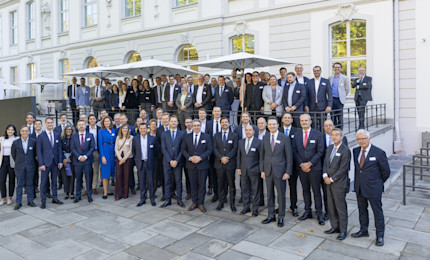Urgence gaz 0 800 028 800
Le 20 oct. 2025
Teréga’s new gas storage auction campaign launches on 5 November 2025
Teréga, the leading independent French gas infrastructure operator in South-West France, unveiled its 2026–2027 storage offers on 14 October, along with its commercial calendar. The auction campaign will officially begin on Wednesday, 5 November.
Teréga’s storage volumes account for 26% of French capacity. The two underground reservoirs at Lussagnet (Landes) and Izaute (Gers) help guarantee the security of the country’s energy supply, and their
geographical position means they play a major role at the crossroads of South European gas exchanges.
16.9 TWh of gas storage capacity available for 2026–2027
Teréga will launch its new commercial campaign for gas storage capacity on Wednesday, 5 November, via its Storeplace platform. Four products will be offered to the market, each differentiated by withdrawal speed to meet a wide range of operational needs.
FIZZ (withdrawal in 85 days): 10.3 TWh;
FAIR (withdrawal in 110 days): 4.1 TWh;
FAST (withdrawal in 40 days): 1.6 TWh;
OPSTOCK (withdrawal in 55 days): 0.9 TWh.
Capacity auctions for the 2026–2027 storage year will take place in November 2025 and January 2026, with sales scheduled for Wednesdays 5, 12 and 19 November, followed by 14 and 21 January.
In line with changes introduced by Deliberation No. 2025-220 of 24 September, part of the 2026–2027 capacity will be offered through multi-year products spanning two or three years.
To support its clients’ operational flexibility, Teréga will also continue to offer its additional services.
Storage levels near full ahead of winter
France’s gas supply security this winter will once again rely on careful storage management, alongside sustained imports from Norway, Spain, and methane terminals.
The injection period is drawing to a close. The Lussagnet and Izaute storage sites, which already hold over 30 TWh, are soon expected to exceed 90% capacity, in line with the European Union’s supply security targets.
À lire aussi

H2med project successfully completes geophysical prospecting campaigns and achieves technical feasibility for the BarMar project

Teréga partners with Lons Section Paloise Women’s Rugby for the 2025–2026 season

In Berlin, Expanding H2med Alliance Meets to Accelerate the Deployment of the Most Advanced European Hydrogen Corridor




